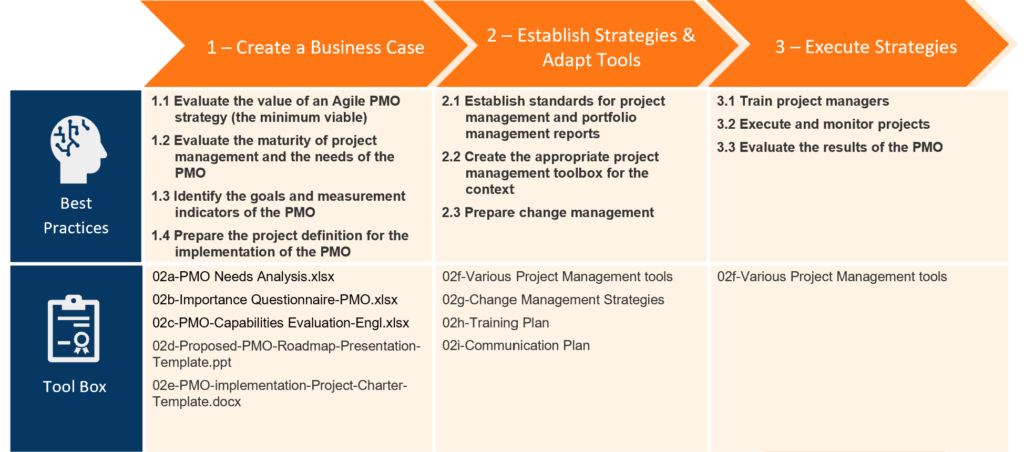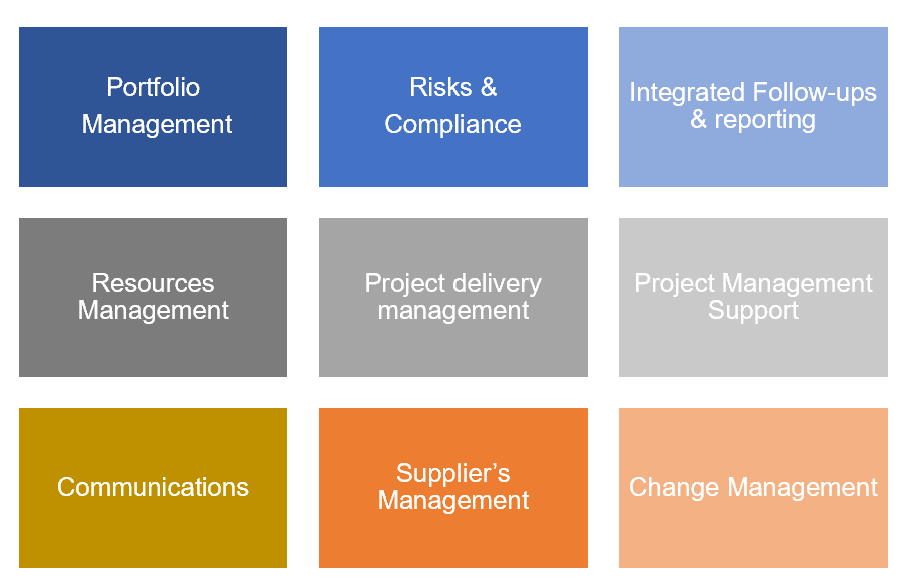
Implement a Project Management Office (PMO)
Project management is increasingly vital to the success of a business. Many organizations have implemented a project management office (PMO) to support the company, or they are seriously considering doing so.
This article presents a PMO implementation approach that can be adapted to the context of your organization.
Project management offices (PMOs) play an increasingly important role, not only in coordinating and managing projects, but in facilitating the transparency of information that the organization needs to make the best decisions. A PMO meets the challenge of a growing number of projects with competing priorities and limited resources and provides the necessary information to pursue the most important initiatives, allocate resources optimally, and ultimately accelerate the growth and success of the organization. It is not about implementing as many projects as possible. It is about executing the projects and portfolios that bring value to the business.
The following table presents the symptoms that often lead to a need for a PMO:

Why a project management office (PMO):
- To have a complete overview of the progress of each project;
- To track projects based on the strategic priorities of your organization;
- To understand the dependencies between the projects in your organization: assess impacts on human and organizational resources;
- To anticipate risks, difficulties, and problems of each project;
- To provide the organization with project management methodology and tools;
- To increase your ability to deliver projects;
- To accelerate the evolution from an operational culture to a project management culture.In recent years, our CIOs have been involved in several initiatives related to the implementation of project management offices, program or project portfolios. Consolidated experience has enabled us to assemble best practices and tools into an approach that is easily adaptable to our clients’ contexts.The following diagram provides a summary view of the deployment approach for a project management office (PMO) proposed by Eficio.

As a first step, a business case should be conducted to justify the establishment of a project management office. The “business case” will describe the following:
- The assessment of project management maturity and needs
- The goals of the PMO and its measurement indicators
- The advantages and limitations of the PMO
- An estimated implementation cost
- An approximate timeline or project duration
At this stage, it is essential to identify the organization’s actual need. We like to use the following 9 capabilities as a basis for reflection. Your PMO should focus on the most important capabilities for your organization.

PMO Capabilities
Tips for a successful implementation
To increase the chances of success for your new PMO, consider the following tips:
- Get long-term buy-in: creating a PMO will mean a significant and lasting change for the organization. It’s important to focus on change management and stakeholder engagement to ensure people are invested in its success.
- Focus on early wins: it’s helpful to identify, achieve, and celebrate some quick wins. This will help to reinforce engagement and encourage morale when implementing these changes. For example, each time a milestone is reached, it should be recognized and celebrated. This could be as simple as sending out a newsletter when the standard operating policies of the project office are established.
- Maintain motivation during slow periods: implementing any significant change can be challenging. There will likely be times when things seem to be moving slowly or not at all. It’s essential to stay positive and focus on maintaining stakeholder engagement and commitment to the final goal.
- Ensure you have defined measures of success: as mentioned earlier, a part of the Business Case should describe the benefits of a PMO. It’s important to have defined measurable benefits that can be tracked and reported. For example, will the PMO standardize project management reports? If so, there should be a date by which this will be achieved and a way to ensure it is realized.
- Incorporate enough flexibility for the PMO to adapt and mature: as the business grows and changes, the PMO needs to adapt. For example, the PMO may start as a supportive PMO, but transform into a directive PMO.
Subscribe to the Eficio newsletter and be the first to receive our updates!

